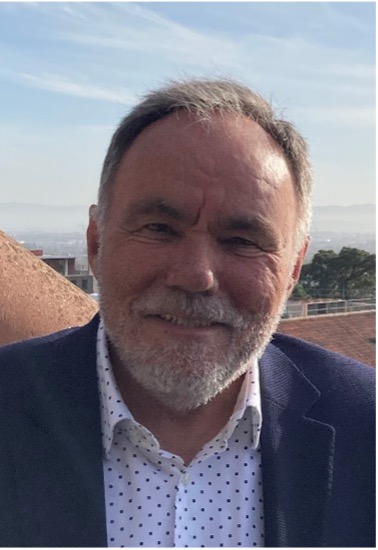Two discoveries made in the last five years lead to a brand new way to study and exploit enzyme catalysis. The first of these is the rapid, reversible and stable electrochemical interconversion of NAD(P)+ and NADP(H) by a small photosynthetic electron-transfer enzyme (‘FNR’) located in a nanoporous metal oxide electrode. The second development is the proof that FNR and other enzymes enter and become trapped in the electrode nanopores at extremely high concentrations, allowing the NAD(P)(H) that is rapidly recycled in either direction by FNR to be used locally to drive a dehydrogenase and couple to sequential enzymes that need not be redox catalysts and may be drawn from all six major enzyme classes. Enzyme cascade catalysis, perhaps unlimited in future scope, is now channelled with precision in the simplest of ways, being confined to an energizable material where it is driven and controlled by the electrode potential and monitored as electrical current. The electrochemical Leaf (e-Leaf) is highly scaleable: up (to very large electrode stacks, each exceeding 300 cm2, fabricated using a titanium foil substrate) and down (to multi-well micro-electrode arrays). Future applications include the green synthesis of pharmaceuticals, the development and study of de novo enzymes, the behaviour of enzymes under crowded conditions and detailed mechanisms of drug interaction under steady state.
Biography

Fraser Armstrong is an Emeritus Research Fellow of St John’s College, Oxford. He obtained his PhD at the University of Leeds with Geoff Sykes then carried out postdoctoral research with Peter Kroneck (Konstanz), Ralph Wilkins (New Mexico), Helmut Beinert (Madison) and Allen Hill (Oxford). In 1983 he was awarded a Royal Society University Research Fellowship which he held in Oxford until 1989 when he joined the Chemistry Faculty at the University of California, Irvine. He moved to the Inorganic Chemistry Laboratory in Oxford in 1993. In 2008, he was elected a Fellow of the Royal Society. His interests are in biological redox chemistry and its application and inspiration for future energy technologies. He has developed new applications of dynamic electrochemical techniques for studying complex electron transfer and catalytic reactions in proteins, including the mechanisms and exploitation of biological hydrogen, oxygen and carbon cycling. His studies on enzymes have provided insight into the design of optimal electrocatalysts for the future, both in detail and horizon, leading to the conclusion that almost perfect catalysts do exist (and must be possible to make) for many important reactions relevant for a sustainable future. He is currently developing a new technology (the e-Leaf) for energizing and exploiting multi-enzyme cascade catalysis under conditions of energized nanoconfinement. He coauthors an internationally popular textbook on Inorganic Chemistry.




